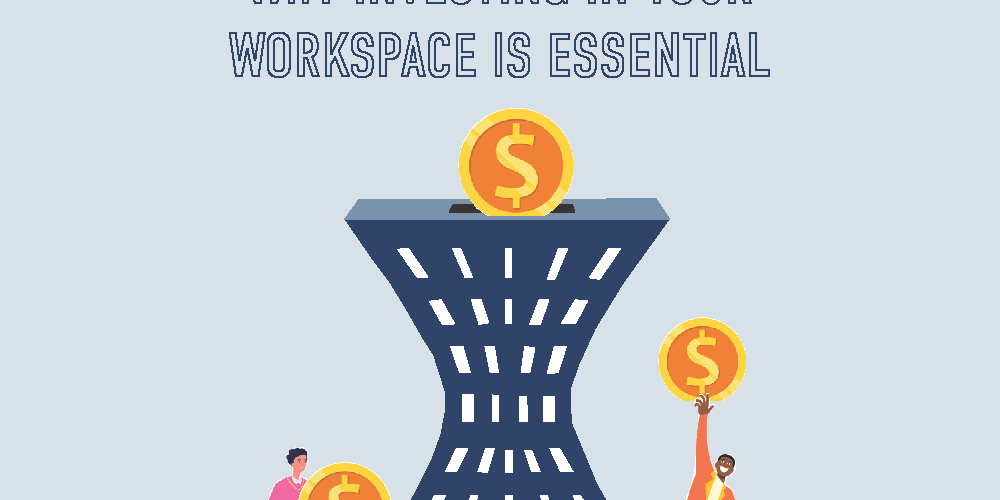Retaining top talent has become a paramount concern for organizations across industries. The costs associated with high employee turnover extend far beyond the financial implications of recruiting and training new hires. The loss of institutional knowledge and experience can severely hamper productivity, disrupt workflows, and impede long-term success. In the post-pandemic era, where the nature of work has undergone a seismic shift, companies must adapt their strategies to cultivate a workplace environment that nurtures employee satisfaction and loyalty.
One critical aspect that often gets overlooked in the pursuit of talent retention is the role of office spaces. The physical workspace is no longer merely a functional necessity; it has evolved into a strategic asset that can significantly influence employee engagement, well-being, and productivity. By investing in high-quality office environments that prioritize ergonomics, collaborative spaces, and amenities that cater to diverse needs, organizations can create a workplace culture that resonates with their workforce. At RCR, we understand the intricate link between office design and employee retention, and we specialize in crafting office spaces that foster a sense of community, inspire creativity, and promote work-life balance. At RCR, we specialize in creating office environments that not only meet the functional needs of businesses but also foster employee satisfaction and engagement.
The High Cost of Employee Turnover
Employee turnover has direct and indirect costs. Direct costs include recruitment, hiring, and training of new staff. Indirect costs, however, can be even more significant, ranging from lost productivity to decreased morale. Studies suggest that replacing an employee can cost anywhere from 6 to 9 months of the employee’s salary on average. Moreover, a poor work environment is one of the top reasons employees cite for leaving a company. This makes it clear that the workspace itself plays a pivotal role in retention strategies.
Why a Better Office Space is Worth the Investment
A well-designed office space does more than just house your staff—it inspires and motivates them. Companies that invest in thoughtful office design can see up to a 27% increase in revenue per employee. The reasons are clear:
• Enhanced Comfort and Well-being: Employees spend a substantial portion of their lives at work. A workplace that prioritizes comfort, access to natural light, and aesthetic appeal significantly impacts daily well-being and productivity. Ergonomic furniture that supports posture, lighting that reduces eye strain, and spaces that incorporate elements of nature—like indoor plants and water features—create an environment where employees feel valued and cared for. Additionally, incorporating wellness areas, such as relaxation zones or fitness centers, directly contributes to reducing workplace stress and enhancing overall health.
• Fosters Collaboration and Innovation: Modern office designs that encourage collaboration can significantly drive innovation. Creating spaces that facilitate teamwork, such as open-plan designs interspersed with huddle rooms and breakout areas, allow for spontaneous meetings and brainstorming sessions. These settings are ideal for enhancing communication and building professional relationships, crucial for a thriving corporate culture. Moreover, integrating technology like smart boards and collaborative software in these spaces can streamline workflow and boost creative processes, ensuring that ideas flow freely and efficiently across the organization.
• Reflects Company Values: An investment in quality office space sends a profound message to current and prospective employees about the company’s commitment to their well-being and professional growth. This can be particularly influential in attracting and retaining top talent who value a workplace that supports their personal and professional development. Offices designed with transparency—such as glass walls, open layouts, and accessible leadership—foster an atmosphere of trust and inclusiveness. Additionally, spaces that are adaptable to various work styles and tasks demonstrate a company’s flexibility and responsiveness to employee needs, aligning the physical environment with broader organizational values of innovation and adaptability.
By expanding on these key areas, businesses can create work environments that not only enhance employee satisfaction and productivity but also solidify a culture of commitment and respect. This strategic investment in office design fundamentally supports broader business objectives by creating a motivated workforce dedicated to achieving corporate goals.
Design Tips and Strategies to Create Engaging Work Environments
Innovative office design is an important role in shaping a workplace that meets both the present and future needs of employees. As companies seek to create environments that promote well-being and productivity, considering how the physical space influences employee behavior and morale is important. Here are several key design strategies to consider that can transform standard office environments into supportive workspaces.
1. Flexible Workspaces: The modern workforce demands versatility in the workplace. Designing spaces that can be easily reconfigured for various tasks and team sizes promotes a dynamic working environment that adapts to changing business needs. Utilizing modular furniture and movable partitions can aid in this flexibility, allowing spaces to transform from collaborative workstations to private pods or large meeting areas with minimal effort. This adaptability not only enhances productivity but also empowers employees to choose how and where they work best, which boosts overall job satisfaction.
2. Nature and Light: Bringing elements of the natural world into the office can have profound effects on employee well-being. Studies have shown that workplaces that incorporate natural light, greenery, and even outdoor views have lower levels of stress and higher employee engagement. Consider installing large windows, skylights, and living green walls to maximize exposure to natural light and bring an element of nature indoors. Additionally, providing access to outdoor spaces such as terraces or gardens can further enhance this benefit.
3. Ergonomics: Ergonomic design goes beyond comfortable seating; it encompasses the entire working environment. Adjustable chairs and desks, supportive flooring, and monitor stands can help prevent the strain and injuries often associated with long periods of desk work. Moreover, ergonomic tools like keyboard trays and footrests contribute to a safer and more comfortable workspace, which can significantly improve job satisfaction and reduce health-related absences.
4. Quiet Zones and Social Spaces: While open-plan offices foster communication and collaboration, they can also increase distractions. Integrating quiet zones where employees can work without interruptions is essential for tasks that require deep concentration. These areas should be acoustically isolated and free from general office traffic. Conversely, designing vibrant social spaces where employees can relax and interact can improve morale and facilitate informal collaboration. These spaces should be inviting and distinctly different from work areas, possibly featuring comfortable seating, recreational activities, or refreshment stations.
5. Technology Integration: In today’s digital age, integrating cutting-edge technology into the workplace is crucial. Smart offices equipped with high-speed internet, wireless charging stations, and seamless connectivity solutions like docking stations enhance productivity and portray the company as innovative. Additionally, investing in collaborative technology such as interactive whiteboards and video conferencing tools can remove barriers to communication, making it easier for teams to work together effectively, regardless of their physical location.
The Strategic Advantage of Quality Office Spaces
As businesses face the challenges of a competitive market and high employee turnover rates, the importance of a well-designed office space becomes more apparent. At RCR, we understand these challenges and are dedicated to helping our clients create workplaces that are not only efficient and beautiful but also strategically optimized to improve employee retention and satisfaction.
Investing in your office space is investing in your people and, ultimately, in the success of your business. Let RCR guide you in transforming your office into a space that reflects the values and ambitions of your company, ensuring it is a place where employees feel valued and motivated to achieve their best.
For more insights on optimizing your office layout, contact us today or visit our blog for more insights.









